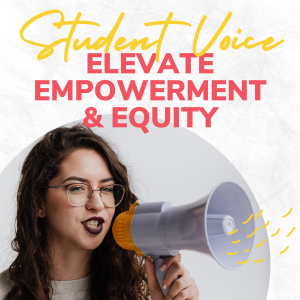In an October 1st, 2015, Washington Post blog about choices, Jay Matthews talks about the community college as a popular starting point for college entrants. However, the numbers that follow are alarming. For every 100 new students at community colleges, only 16 will have earned an associate degree or certificate after three years. After six years, just 34 will have some kind of degree or credential. And 46 will have disappeared.
These disturbing numbers are provided by Judith Scott-Clayton, an assistant professor of economics and education at Teachers College, Columbia University, in her paper “The Shapeless River: Does a Lack of Structure Inhibit Students’ Progress at Community Colleges?” The same message is delivered in more detail by her Columbia University colleagues Thomas R. Bailey, Shanna Smith Jaggars, and Davis Jenkins in their book, “Redesigning America’s Community Colleges: A Clearer Path to Student Success.”
For many years I have been one of those quite pleased with the huge array of choices that colleges offer to students and brag about in their marketing. Course choices seem to be endless, including the proverbial basket weaving we all joked about. It seems that whatever your interest is, colleges will have a professor to teach it. At community colleges, where many students go to get an education that will get them a job, choice rules. And yet, Scott-Clayton, Bailey, Jaggars, Jenkins, and many other experts say that same huge selection in the college catalog is part of the reason why students find it so hard to get where they want to go!
Psychological research shows that “the number of complex program options students must choose from . . . can cause decision paralysis, arbitrary decision outcomes, and dissatisfaction,” Scott-Clayton said. Bailey, Jaggars, and Jenkins point to an alternative to the cafeteria course model: City University of New York’s Guttman Community College, which opened in 2012 as a model for the new, limited-choice community college.
All students take the same first-year core curriculum. The second year their limited program choices are based on studies indicating available jobs in the city. These structured pathways include business administration, applied science, information technology, and urban studies.
From an enrollment management standpoint it’s a risk to restrict student choice. But Scott-Clayton said that Guttman is able to do it because it’s in a huge city where “students’ choices remain unconstrained at other community colleges.” Something has to change if we are to improve student completion rates. “For many students at community colleges,” Scott-Clayton said, “finding a path to degree completion is the equivalent of navigating a shapeless river on a dark night.” Choices can be overwhelming, students must decide “which program to pursue, which courses to take within it, when to take them, how to pay for them, and whom to approach if a problem or question arises.”
A promising model that limits course choices to improve student navigation of the “shapeless river” and their ultimate completion is structured pathways. Embedded in the pathways model is curriculum alignment. Students begin the pathway in high school and follow it on to college and career. Curriculum at all levels along the pathway is aligned to eliminate gaps and redundancies. Pathways are clear and coherent and provide relevance to the courses students find themselves taking, including developmental education.
And the Teachers College scholars agree that advisors and counselors are needed to get individual students on the appropriate pathway and keep them there. However Scott Clayton notes that the number of advisors and counselors “is limited by extraordinary high caseloads, which average one advisor/counselor for up to 1,500 students.” Some estimates suggest that fewer than 25% of community college students were assigned a specific person to contact for assistance.
Several colleges incorporating structured pathways and other strategies to reduce choices are finding a significant increase in completion rates. Maybe my/our time has come to advocate for fewer choices, more structure—and more completion.
Daryl Peterson is a retired Valencia College director and a community college consultant for Bridge the Divide, a division of EPIC, the Educational Policy Improvement Center. For more information on guided pathways and alignment, contact Kirsten Aspengren at Xvefgra.nfcratera@vasyrkvba.bet





